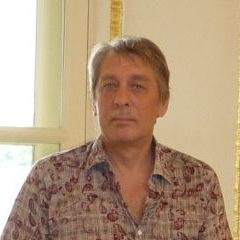Mineral Formation in Pyrometamorphic Process
A special issue of Minerals (ISSN 2075-163X). This special issue belongs to the section "Mineral Geochemistry and Geochronology".
Deadline for manuscript submissions: closed (15 September 2020) | Viewed by 16600
Special Issue Editors
Interests: pyrometamorphism; combustion metamorphism; coal fires; burned dumps; paralava; new minerals; silicate-melt and fluid inclusions in minerals; mineralogy of alkaline rocks; carbonatites; kimberlites; mineralogy of meteorites
Special Issues, Collections and Topics in MDPI journals
Interests: pyrometamorphism; combustion metamorphism; unhydrous melted rocks; coal fires; burned dumps; new minerals; cement mineralogy; mineralogical diversity; mud volcanism; geochemistry
Interests: pyrometamorphism; combustion metamorphism; metamorphic petrology; mineralogy and geochemistry
Special Issue Information
Dear Colleagues,
Pyrometamorphism is a common phenomenon in the Earth’s history and involves all stages of transformation of rocks (typically sediments) into high-temperature mineral associations (up to the melting stage) and their subsequent retrograde alteration under near-surface conditions. The pyrometamorphic process is very similar in both natural and anthropogenic environments.
Pyrometamorphic rocks include xenoliths of various compositions in mafic volcanic/plutonic rocks, wall rocks of mafic magma intrusion/extrusion, and sedimentary rocks that have been heated by the combustion of coal and other caustobiolith strata, flame burning in mud volcanoes, etc. Such high-temperature/low pressure transformation of sedimentary protoliths may lead to high mineral diversity, which strongly depends on the initial composition of the rocks, heating temperature, redox conditions, and other factors. For example, more than 200 minerals have been found in the unique Hatrurim Formation (Israel–Jordan), and some of them indicate very specific pyrometamorphic conditions.
This Special Issue invites contributions dealing with mineralogical and petrographic aspects in pyrometamorphic processes: the discovery of new minerals, the chemistry and geochemistry of minerals and rocks, the melting and formation of paralavas, the mineralogy of retrograde associations, fumarole mineralization in burned complexes, etc. Papers concerning the mineralogy of technogenic combustion (burned dumps of coal mines, catastrophic man-induced fires, industrial microspheres, burning of waste material, etc.) are also welcome.
The aim of this Special Issue is to collect research papers devoted to recent studies of the mineralogy and petrology of pyrometamorphic rocks.
Dr. Victor V. Sharygin
Dr. Ellina V. Sokol
Prof. Dr. Rodney Grapes
Guest Editors
Manuscript Submission Information
Manuscripts should be submitted online at www.mdpi.com by registering and logging in to this website. Once you are registered, click here to go to the submission form. Manuscripts can be submitted until the deadline. All submissions that pass pre-check are peer-reviewed. Accepted papers will be published continuously in the journal (as soon as accepted) and will be listed together on the special issue website. Research articles, review articles as well as short communications are invited. For planned papers, a title and short abstract (about 100 words) can be sent to the Editorial Office for announcement on this website.
Submitted manuscripts should not have been published previously, nor be under consideration for publication elsewhere (except conference proceedings papers). All manuscripts are thoroughly refereed through a single-blind peer-review process. A guide for authors and other relevant information for submission of manuscripts is available on the Instructions for Authors page. Minerals is an international peer-reviewed open access monthly journal published by MDPI.
Please visit the Instructions for Authors page before submitting a manuscript. The Article Processing Charge (APC) for publication in this open access journal is 2400 CHF (Swiss Francs). Submitted papers should be well formatted and use good English. Authors may use MDPI's English editing service prior to publication or during author revisions.
Keywords
- Xenoliths in igneous rocks and contact metamorphism
- Mineralogy and petrography of pyrometamorphic complexes
- Hatrurim formation
- Burning in mud volcanoes
- Minerals and rocks in natural coal fires
- Burned coal dumps
- Fumarole mineralization during combustion metamorphism
- New, endemic, and rare pyrometamorphic minerals
- Silicate-melt and fluid inclusions in pyrometamorphic minerals






